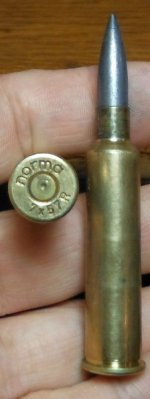Hello,
I am new to reloading and wonder about what techniques to get the best accuracy. Am mainly loading for bolt guns right now. Going to try neck sizing and I was wondering if neck turning would be of any benefit. I use all kinds of different brass mainly from fired factory ammo and some LC in .308 and plan to order some Winchester. Loading for 700 5r .308 which I assume is a standard chamber and two other factory 700s. Use standard RCBS FL die sets right now.
Going to try Lee Collet dies for the necks and neck bump. I also have been necking down 30-06 brass to 25-06 for my new 25-06 and I hear necks are thicker but rounds have chambered fine. I'm wondering if neck turning may be a good next step.
Thanks for any insight.
I am new to reloading and wonder about what techniques to get the best accuracy. Am mainly loading for bolt guns right now. Going to try neck sizing and I was wondering if neck turning would be of any benefit. I use all kinds of different brass mainly from fired factory ammo and some LC in .308 and plan to order some Winchester. Loading for 700 5r .308 which I assume is a standard chamber and two other factory 700s. Use standard RCBS FL die sets right now.
Going to try Lee Collet dies for the necks and neck bump. I also have been necking down 30-06 brass to 25-06 for my new 25-06 and I hear necks are thicker but rounds have chambered fine. I'm wondering if neck turning may be a good next step.
Thanks for any insight.

